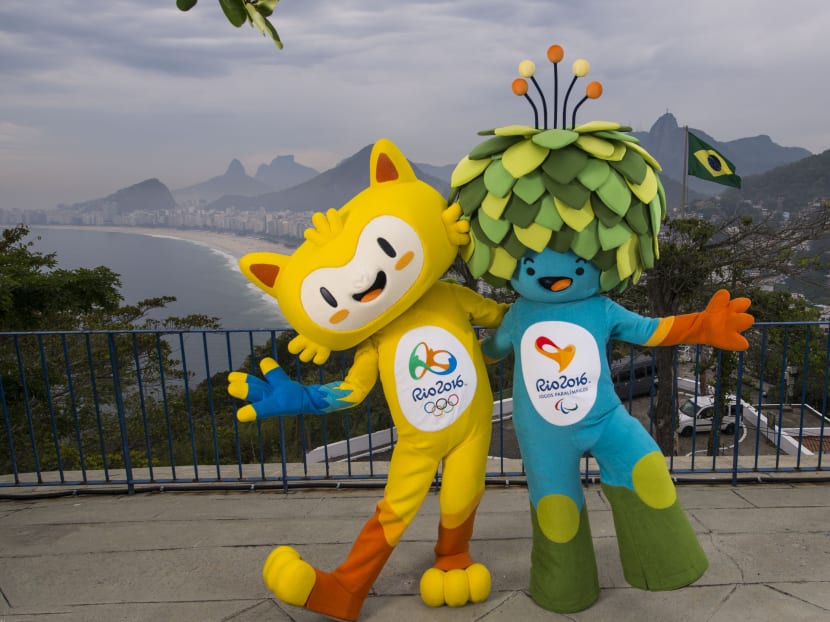Rio mascots represent Brazil’s animal, plant life
RIO DE JANEIRO — A bright yellow cat-like figure is the mascot of the 2016 Olympics in Rio de Janeiro.

The mascots of Rio 2016 Olympic (left) and Paralympic Games pose for a photo at the Leme Fort, with Copabana beach in the background, in Rio de Janeiro, Brazil, Nov 23, 2014. Photo: AP/Rio 2016 Organising Committee for the Olympic and Paralympic Games
RIO DE JANEIRO — A bright yellow cat-like figure is the mascot of the 2016 Olympics in Rio de Janeiro.
The smiley-faced mascot represents the animal life of Brazil. The mascot for the Paralympics is a mopped-headed doll with leafy hair, meant to represent the vast diversity of the flora in Brazil.
The mascots made their first official appearance today (Nov 24). A public poll will be conducted to decide their names from a shortlist of possibilities.
The cuddly, cartoon-like mascots are big business.
Organisers hope to raise 1 billion reals (S$517 million) from branded merchandise. Income from merchandising makes up a big chunk of the US$3 billion (S$3.9 billion) operating budget. Half of that budget is to come from the sale of local sponsorships.
The Olympic merchandising campaign will comprise about 12,000 products aimed mostly at children.
“Our expectation is that the mascots will represent 25 per cent of our (merchandising) business,” Slymara Mutini, head of licensing, told The Associated Press in a recent interview.
“We are all very, very excited about the mascots, and we truly believe that’s an achievable goal. And we might even surpass it.”
The mascot for this year’s World Cup in Brazil — an armadillo named Fuleco — generated little interest. Some blamed this on pre-World Cup protests, and repeated delays and distractions in preparing venues.
In addition to the operating budget, Rio is spending about US$20 billion in a mix of private and public money to prepare sports venues and urban infrastructure. Brazil spent about US$15 billion on the World Cup. AP





